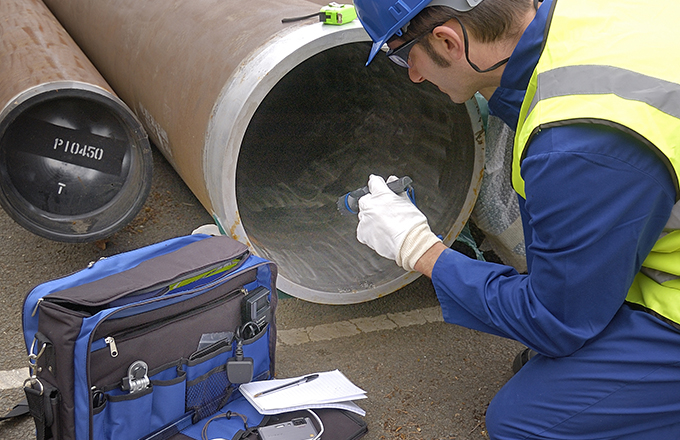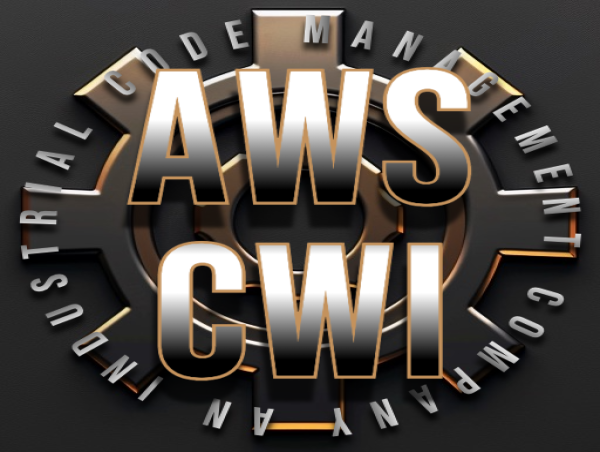A Comprehensive Guide to Welding Examination Techniques and Best Practices for Quality Control in Fabrication Projects
Welding inspection serves as a basic column in ensuring the structural integrity and safety and security of made tasks. Establishing effective methods and a durable top quality management system can improve conformity and integrity.
Relevance of Welding Assessment
Welding assessment is a vital element in making certain the integrity and safety and security of welded structures. The process entails a systematic assessment of welds to recognize any type of flaws that might compromise the stamina and durability of the last item. Effective inspection is crucial not only for compliance with industry requirements and policies yet likewise for guarding the health and wellness and safety and security of employees and the public.

Additionally, welding assessment offers as a useful device for continuous renovation in construction processes. Ultimately, focusing on welding assessment fosters a culture of top quality guarantee, making certain that projects satisfy both customer assumptions and governing needs.
Common Welding Examination Methods
Various methods are utilized to evaluate welds, each customized to find specific sorts of problems and make sure top quality. Among the most commonly made use of techniques are aesthetic evaluation, ultrasonic testing, radiographic testing, magnetic fragment screening, and dye penetrant testing.
Aesthetic evaluation is one of the most straightforward method, permitting examiners to recognize surface irregularities such as splits, porosity, and undercutting. Ultrasonic testing employs high-frequency acoustic waves to spot interior flaws, offering an extensive evaluation of weld integrity. Radiographic testing utilizes X-rays or gamma rays to develop pictures of the weld, exposing internal defects that are not noticeable to the nude eye.
Magnetic fragment testing is particularly reliable for ferromagnetic materials, recognizing surface area and near-surface flaws by applying electromagnetic fields and utilizing great bits that indicate abnormalities. Color penetrant testing entails using a tinted color to the weld surface area, which seeps into fractures and is revealed under ultraviolet light, making it simple to spot problems.
Each of these methods plays an important function in preserving welding top quality, and the choice of a proper approach depends on the details demands of the manufacture project, including material type, weld arrangement, and the preferred degree of assessment.
Important Evaluation Devices


These tools aid make sure that welds meet the required specs for stamina and sturdiness. Additionally, ultrasonic testing devices are utilized to identify inner problems without compromising the honesty of the weld.
An additional crucial tool is the firmness tester, which examines the mechanical properties of a weld and identifies its suitability for certain applications. Welding inspection software program help in documenting searchings for, helping with data evaluation, and ensuring conformity with market criteria. Together, these essential assessment devices develop a detailed arsenal that supports the welding examination process, eventually contributing to the high quality assurance of manufacture projects.
Ideal Practices for Quality Control
In the quest of high quality assurance, implementing best practices is necessary for accomplishing trusted and regular welding results. Establishing a comprehensive welding top quality management system (WQMS) is basic. This system must incorporate specified treatments, criteria, and documents methods that lead every phase of the welding process.
Routine training and qualification of welding workers are crucial. Experienced welders with updated knowledge of techniques and precaution contribute dramatically to high quality. Moreover, performing pre-welding evaluations makes sure that products and tools satisfy specified criteria, minimizing the chance of issues.
Incorporating real-time tracking throughout the welding procedure enables for immediate detection of irregularities, allowing restorative activities to be taken without delay. Post-welding examinations, consisting of aesthetic checks and non-destructive testing (NDT), are vital in verifying weld stability and compliance with market criteria.
Additionally, keeping meticulous records of assessments, weld criteria, and restorative activities cultivates a society of responsibility and continual renovation. Engaging stakeholders in regular top quality evaluations can additionally boost the general efficiency of quality control steps. By sticking to these ideal methods, companies can dramatically boost their welding high quality assurance efforts, consequently making sure job success and customer complete satisfaction.
Enhancing Safety and Conformity
Achieving high criteria in welding high quality assurance naturally lines up with the imperative of enhancing safety and conformity within the market. Efficient welding assessment techniques are essential in identifying prospective hazards and making certain that all processes stick to regulatory standards. These techniques not just serve to keep architectural stability yet additionally shield the health and wellness and safety and security of personnel associated with construction jobs.
Executing rigorous assessment methods, such as aesthetic examinations, non-destructive testing (NDT), and detailed documentation, establishes a culture of safety and responsibility. Training welders and inspectors in existing security laws and best practices is vital. This guarantees that all team participants know possible dangers and are furnished to go to these guys minimize them.
Furthermore, compliance with industry criteria, such as those established by the American Welding Culture (AWS) and the International Organization for Standardization (ISO), is non-negotiable. Normal audits Extra resources and assessments aid determine voids in safety and security steps and promote continuous improvement - Welding Inspection Milwaukee. Inevitably, a commitment to enhancing safety and conformity not only cultivates a more secure working environment yet additionally results in superior top quality outcomes and decreased responsibility for companies taken part in welding construction
Conclusion

Welding examination offers as a basic pillar in making certain the architectural stability and security of fabricated tasks.Welding inspection is an essential component in making certain the integrity and security of welded structures. Ultimately, prioritizing welding examination promotes a culture of quality assurance, ensuring that jobs fulfill both client assumptions and regulatory requirements. With each other, these crucial look these up examination devices create an extensive toolbox that supports the welding assessment process, eventually adding to the top quality assurance of construction projects.
In final thought, reliable welding examination is essential for making certain the structural integrity and safety and security of made tasks. Welding Inspection Milwaukee.